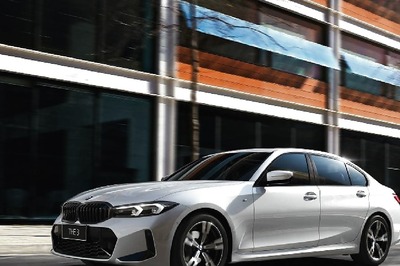
152
views
views
The inauguration of the National Emblem marks the first major milestone ahead of the new Parliament building's scheduled opening for later this year, in time for the Winter Session
Prime Minister Narendra Modi on Monday unveiled the National Emblem on the roof of the new Parliament building in the national capital. He was joined by Lok Sabha Speaker Om Birla, Rajya Sabha Deputy Chairman Harivansh and Urban Development Minister Hardeep Singh at the inauguration.
The inauguration of the bronze emblem marks the first major milestone ahead of the new building’s scheduled opening for later this year, in time for the Winter Session of Parliament.
Here’s all you need to know about the National Emblem atop the new Parliament building:
- The 6.5-metre State Emblem of India, weighing 16,000 kg, is fully hand-crafted by Indian artisans and is made of high purity bronze
- A structure of steel weighing around 6,500 kg has been constructed to support it
- The State Emblem of India is an adaptation from the Sarnath Lion Capital of Asoka which is preserved in the Sarnath Museum. The Lion Capital has four lions mounted back-to-back on a circular abacus. The frieze of the abacus is adorned with sculptures in high relief of an elephant, a galloping horse, a bull, and a lion separated by intervening Dharma Chakras
- The concept sketch and process of casting of the National Emblem on the roof of the new Parliament building went through eight different stages of preparation
- A computer graphic sketch was made and based on that a clay model was created. Once approved by competent authorities, the FPR Model was made
- A mould was made from the model, and the inside of this negative mould was brushed with melted wax to the desired thickness of the final bronze. After removal of the mould, the resultant wax shell was filled with a heat-resistant mixture
- Wax tubes, which provide ducts for pouring bronze during casting, and vents for the gases produced in the process, were fitted to the outside of the wax shellMetal pins were hammered through the shell into the core to secure it. Next, the prepared wax shell was completely covered in layers of heat-resistant fibre reinforced plastic, and the whole was inverted and placed in an oven
- During heating, the plaster dries and the wax runs out through the ducts created by the wax tubes. The plaster mould was then packed in sand, and molten bronze poured through the ducts, filling the space left by the wax
- When cool, the outer plaster and core were removed, and the bronze received finishing touches
- Finally, the statue was polished and breezed, and ready with clear coat of protective polish and no paint to showcase the rich metal
- There is no other similar depiction of the emblem, from the perspective of material and craftsmanship, anywhere else in India
- Over 100 artisans from various parts of the country worked on the design, crafting and casting of the emblem for over six months
- The installation itself was a challenge as it was 32 meter above upper ground level
Read all the Latest News, Breaking News, watch Top Videos and Live TV here.














Comments
0 comment